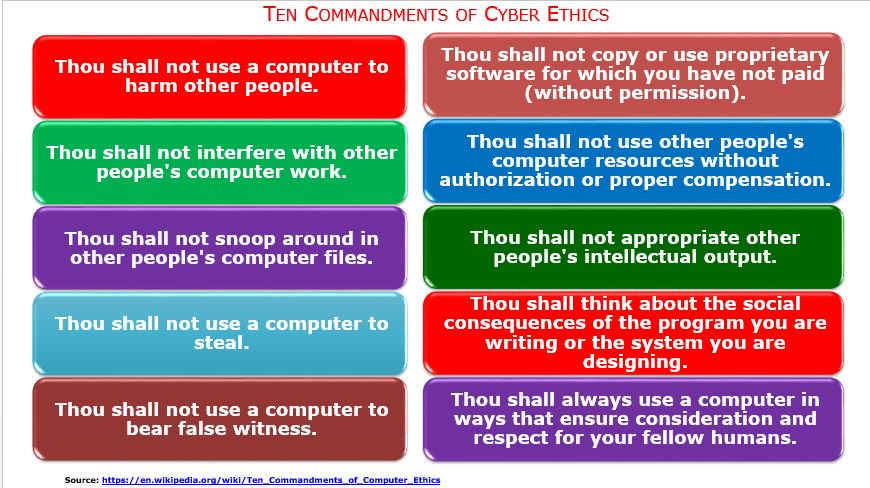Created in 1992, the Ten Commandments of Computer Ethics was inaugurated by the Computer Ethics Institute, an organization established in 1985 by members of other foundations such as IBM and The Brookings Institution [2]. Prior to its invention, the Computer Ethics Institute had planned to increase awareness of the various ethical dilemmas with the field of IT (Information Technology); as a result, the group conjured a code of behaviour consisting of ten distinctive principles that are still embraced in today's modern society. These concepts intend to restrict technology users from performing actions that harm other people or violate someone’s moral rights, and generally cover over topics such as the privacy of user information, plagiarism and the right to integrity, and the theft of personal property.

